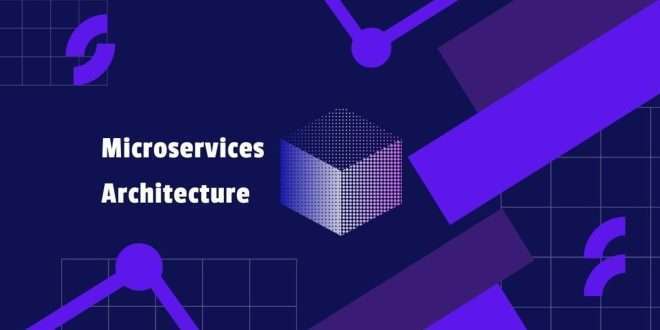In recent years, the technology landscape has been witnessing a significant shift towards decentralization. This transformative trend has given rise to the concept of microservices in the edge, a groundbreaking approach that holds immense promise for the future of computing. In this blog, we delve deep into the world of microservices, exploring their architecture, advantages, and potential applications. Let’s embark on a journey that unravels the potential of this cutting-edge technology.
The Rise of Microservices Architecture
Traditional monolithic architectures have served their purpose for decades, but they come with inherent limitations, especially in today’s fast-paced and dynamic digital world. Enter microservices architecture – an innovative way to design software applications as a collection of small, independent services, each serving a specific function. These services communicate via APIs, allowing for greater flexibility, scalability, and fault isolation.
The driving force behind the popularity of microservices is their ability to promote agility and streamline development and deployment processes. Teams can work on individual services independently, enabling continuous delivery and faster time-to-market. As a result, organizations are shifting towards this modular approach to keep pace with evolving user demands.
Advantages of Microservices
Enhanced Scalability and Performance
Microservices architecture empowers businesses to scale specific services independently based on their requirements. Unlike monolithic systems, where scaling often involves the entire application, microservices allow organizations to allocate resources efficiently, resulting in optimized performance and cost-effectiveness.
Fault Isolation and Resilience
In monolithic applications, a failure in one component can bring down the entire system. With microservices, individual services are isolated, ensuring that a failure in one service does not cascade across the entire application. This enhances overall system resilience and reduces the risk of critical failures.
Technology Diversity
Embracing microservices allows organizations to adopt diverse technologies for different services. This flexibility enables teams to choose the most suitable technology stack for each specific task, ultimately leading to improved efficiency and innovation.
Continuous Deployment
Microservices facilitate continuous deployment practices. Developers can quickly roll out updates for specific services without affecting the rest of the application. This allows organizations to iterate rapidly, respond to user feedback, and stay ahead of the competition.
Implementing Microservices
Service Identification
To successfully implement microservices, organizations must identify services that can function independently. Breaking down the monolith requires careful analysis of the application’s functionalities and dependencies.
API Design and Documentation
Clear and well-documented APIs are crucial for effective communication between microservices. API design should consider factors like data formats, authentication, error handling, and versioning to ensure seamless integration.
Containerization
Containerization technologies like Docker have become instrumental in deploying and managing microservices. Containers encapsulate each service with its dependencies, making it easier to ensure consistency across different environments.
Orchestration with Kubernetes
For large-scale microservices deployments, Kubernetes provides a powerful orchestration solution. It automates the deployment, scaling, and management of containers, simplifying the operational complexity associated with microservices.
Microservices at the Edge
Edge Computing Overview
Edge computing brings computation closer to the data source, reducing latency and bandwidth usage. Combining edge computing with microservices architecture offers an opportunity to decentralize computing resources and improve overall application performance.
Edge Microservices Use Cases
Internet of Things (IoT):
Edge microservices are ideal for IoT applications, where data processing and decision-making need to happen close to the edge devices, reducing reliance on central cloud infrastructure.
Real-Time Data Processing:
Applications that demand real-time data processing, such as autonomous vehicles and augmented reality, can greatly benefit from edge microservices’ low-latency capabilities.
Offline Functionality:
Edge microservices enable applications to continue functioning even when disconnected from the central cloud, ensuring seamless user experiences in remote or unreliable network conditions.
Edge Microservices Challenges
Resource Constraints:
Edge devices often have limited computing power and memory, requiring careful optimization of microservices to operate efficiently.
Security and Privacy:
Deploying microservices at the edge raises security concerns as sensitive data may be processed on devices vulnerable to physical attacks. Robust security measures are essential to mitigate risks.
Service Discovery and Communication:
As the number of edge devices grows, ensuring efficient service discovery and communication between microservices becomes crucial for maintaining the system’s integrity.
Commonly Asked Questions
Q1. How do microservices differ from traditional monolithic architecture?
Microservices differ from traditional monolithic architecture in their modular approach. Instead of building a single, large application, microservices break it down into smaller, independent services that can be developed, deployed, and scaled individually.
Q2. What are the key benefits of adopting microservices?
The key benefits of adopting microservices include enhanced scalability, fault isolation, technology diversity, and the ability to support continuous deployment practices, resulting in faster time-to-market and improved overall system resilience.
Q3. How do microservices contribute to edge computing?
Microservices at the edge enable decentralization of computing resources, reducing latency and improving application performance. They find applications in IoT, real-time data processing, and offline functionality use cases.
Q4. What are the challenges of deploying microservices at the edge?
Challenges in deploying microservices at the edge include resource constraints, security and privacy concerns, and the need for efficient service discovery and communication in a growing network of edge devices.
Q5. How can organizations ensure successful implementation of microservices?
Organizations can ensure successful implementation of microservices by carefully identifying services, designing and documenting clear APIs, embracing containerization technologies, and utilizing orchestration platforms like Kubernetes for large-scale deployments.
Final Words
In conclusion, the fusion of microservices architecture and edge computing heralds a new era of decentralized computing. With enhanced scalability, fault isolation, and the ability to adapt to diverse technology stacks, microservices offer a flexible and efficient way to build and deploy modern applications. Organizations willing to embrace this paradigm shift stand to gain a competitive edge, delivering innovative and resilient solutions to meet the demands of the digital age.
 webfily
webfily



